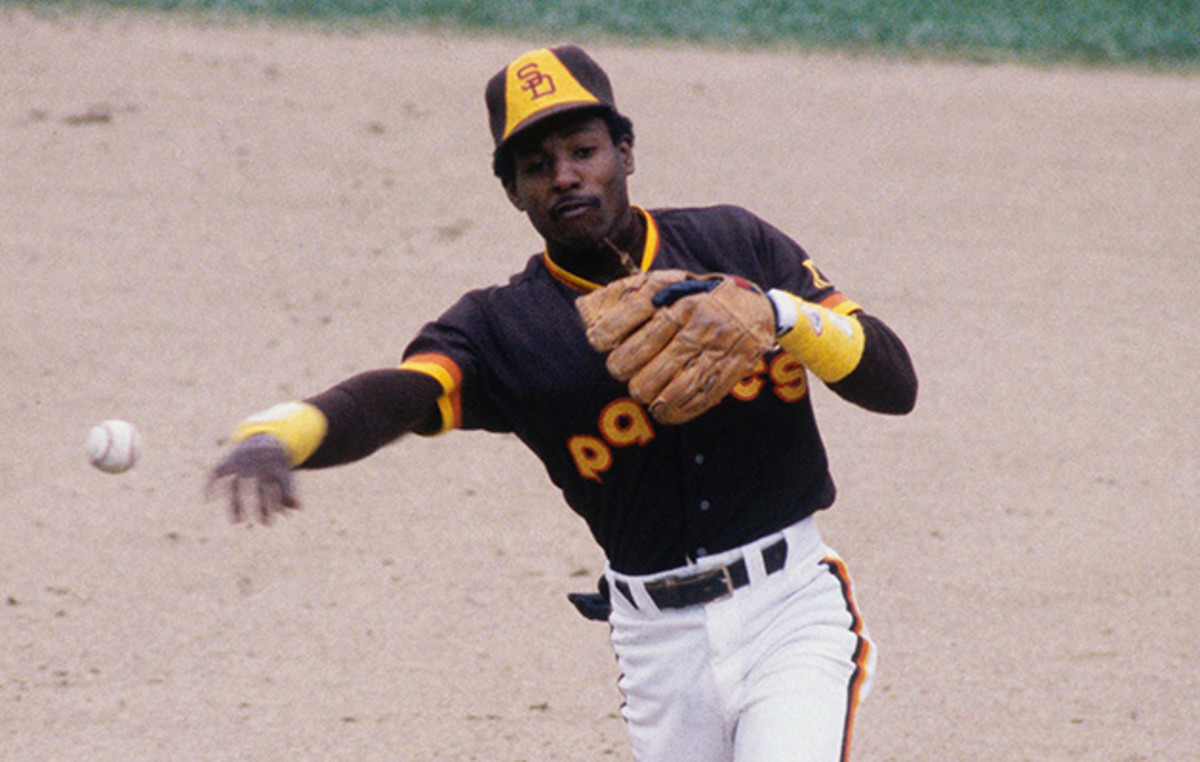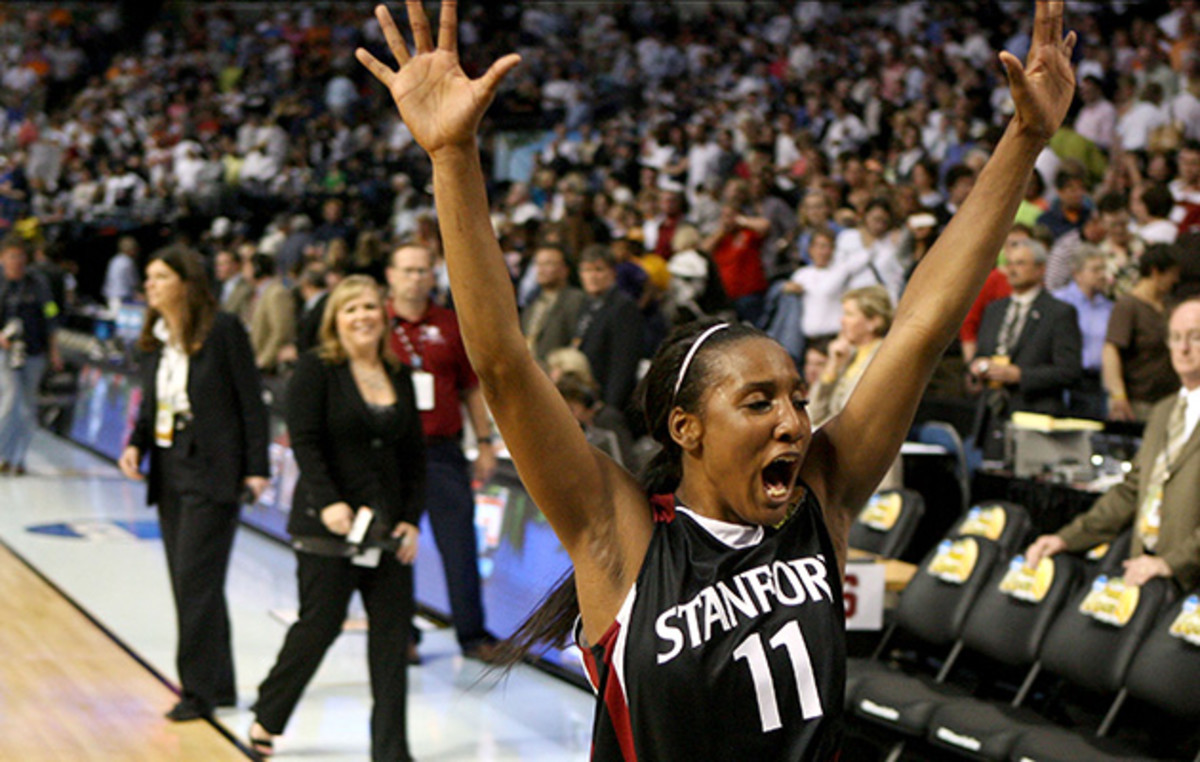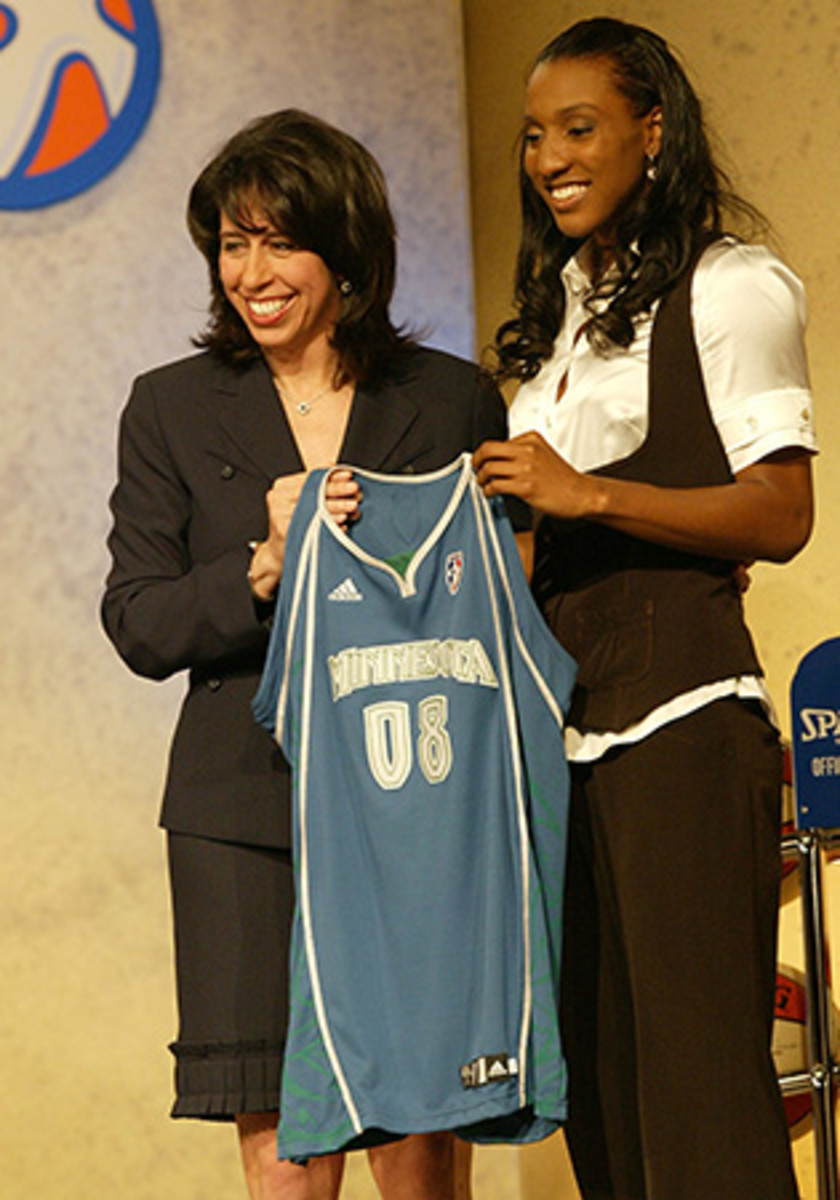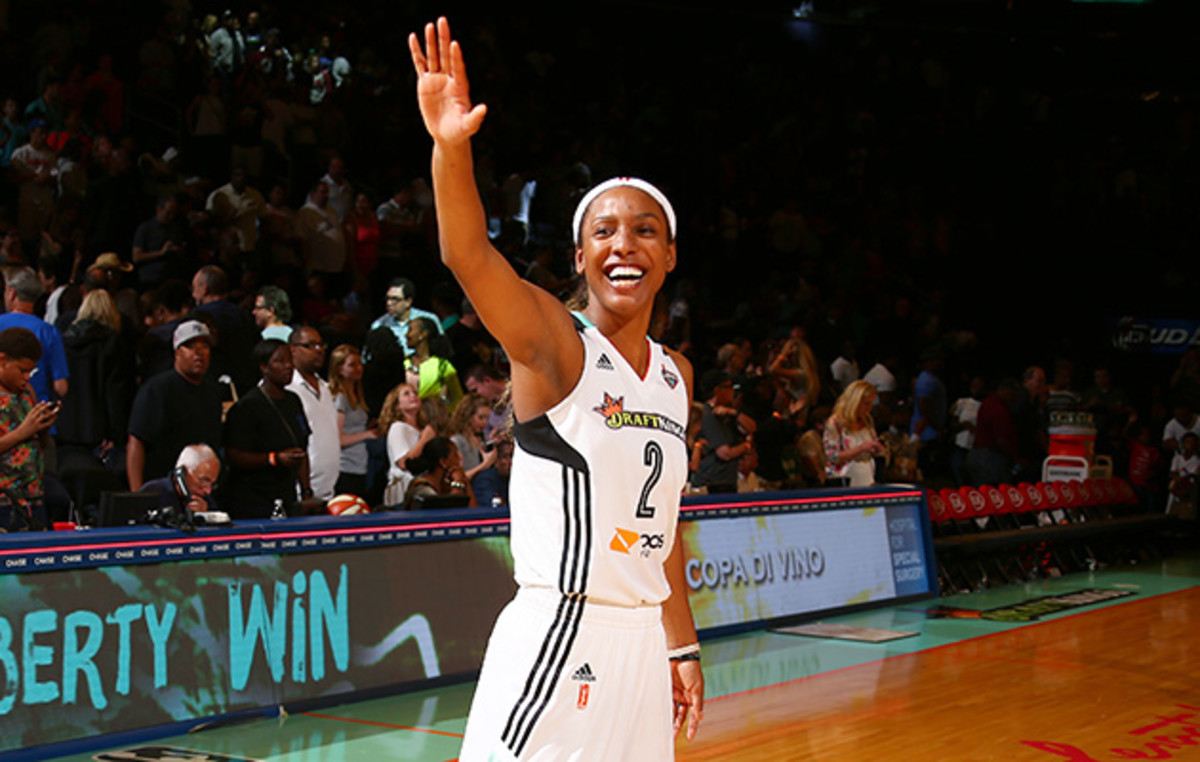Liberty's Candice Wiggins chasing WNBA title in memory of her father

NEW YORK — Candice Wiggins woke up from a short nap on Sept. 22, hours before one of the most important games of her career: her first elimination game with the WNBA’s top-seeded New York Liberty, when she felt an emptiness in her stomach. She was hungry.
She looked towards her table in her one-room apartment an hour north of Madison Square Garden, and saw the boxed lunch of fish, potatoes and vegetables that she had been given after morning shootaround. She felt that it was still warm.
Before falling asleep, Wiggins had decided to fast on the day of a game for the first time in her eight-year career. When she woke up hungry, she reconsidered, but came to the same decision: she was going to deny herself the food. “I was hungry, but I was hungrier for something else—something in my spirit,” Wiggins said. “I had a weakness in the flesh physically, and so my dependency on my spirit was so much more intensified, and so I could figure out exactly what I needed to ask. I was bold.”
She immediately knelt by her bed and began to pray. She asked God for something simple: I want to make every shot I take tonight. Every shot. Wiggins knew it sounded selfish, maybe crazy, but it just came out, accompanied by a flick of her right wrist. To her, this game was about more than basketball. It was for her father.
*****
Alan Wiggins was a record-setting base stealer for the San Diego Padres in the early 1980s—a .258 switch hitter who hit leadoff when the club won its first NL Pennant in 1984. He garnered MVP votes that year and hit .364 in the World Series.
But Candice didn’t know that side of her father.
She remembers only flashes of her father, like hiding behind her mother’s leg when she saw him at the table, surrounded by drug paraphernalia, or turning away when he tried to embrace her. While her older siblings, 8 and 5 at the time of his death, remember listening to music with Alan or going to the beach with him, one of the few times Candice recalls looking at her dad directly was in January 1991, when, against the wishes of the adults around her, the three-year-old wandered up and peered into her father’s open casket after Wiggins died of complications with AIDS—the first MLB player known to succumb to the disease.
New York Liberty star Tina Charles determined to help her community
That’s when her life began, Wiggins said—when her father’s ended.
Candice’s mom, Angela, tried to shield her youngest daughter from whispers about Alan and his disease. Angela also tried to hide her own pain from her children.
Angela and Alan met when they were 12 and had been together ever since. When the Angels drafted Alan eighth overall, Angela did not believe it until he put a Halos jacket on her. She was there for him when he entered drug treatment in the San Diego area after being arrested for possession of cocaine in July 1982. Less than three years later, Angela was by her husband again, blinded by cameras, when he held a press conference in June 1985, saying “I just want to play” after returning from another stint in a different drug treatment program. He was traded to the Orioles, but felt out of place in their clubhouse. He got in fights with teammates and felt humiliated by frequent drug tests before being released in 1987, never to play in the big leagues again.
On Jan. 6, 1991, Angela stood by Alan one final time, rubbing lotion on his lesion-covered shoulders as the former star withered away in a hospital bed, weighing less than 80 pounds at the time of his death. Newspapers initially reported that Wiggins died of tuberculosis, but it was later reported that he fell victim to AIDS, likely after acquiring the disease through intravenous drug use.
For the next five years, Angela would drop her children off at school before returning home to cry. Still, she could not hide everything from her youngest daughter, who secretly listened to her mom’s angry phone calls while pretending to play with dolls.
“I’d hear ‘AIDS, AIDS, AIDS,’” Candice remembered. “AIDS was like this monster. At first I thought AIDS was a person or something. You just want to know what is going on.
“You hear all the adults, you hear the fear and the panic, you feel like the world is going to end, like our whole world is over. There’s no reason to live, that’s how they were acting.”
In 1992, Candice got her hands on a Reader’s Digest story about four baseball players’ struggles with drug use, including Wiggins, that had been left on a table. Candice, five at the time, did not really understand the story, but she was already reading well above grade level and she was smart enough to latch onto the headline, “They dared cocaine—and lost."
The connection was easy for her to make: Drugs are bad. My dad did drugs. My dad was bad.

*****
During those years, Angela prayed that one of her children would be like Alan. She missed his presence. At first she thought it would be Cassandra, her oldest child. And Alan Jr. was a candidate for obvious reasons. But quickly, it became clear that Candice was Alan’s daughter as much as anyone could be—from her beady eyes and pronounced cheekbones to her roadrunner legs.
Though Candice hardly knew her father and knew even less about his good side, her mother was not shy about the future she hoped Candice would grow into. "You’re going to bring him back from the grave," she would tell Candice, “You’re going to bring him back to life."
Years earlier, Alan had set up a basketball hoop in the front yard of the family’s San Diego home, and when Magic Johnson announced that he had AIDS in November 1991, the Wiggins family became a basketball family. Candice excelled immediately, beating fourth graders off the dribble as a first grader and starting on a boy’s travel team.
When the WNBA was announced in 1996, the entire Wiggins family was elated. Except for Candice. She felt her insides get heavy. Now, she felt, she had no choice but to make it to the league.
Despite the pressure, Wiggins continued to excel. After winning state titles in high school, she became a four-time All-American at Stanford and led the Cardinal to three Elite Eights, saving her best performance for the final one.
Wiggins said she felt her performance in that 2008 game against Maryland would affect her legacy and her family’s legacy. Yet, on the day of the game, she did exactly what coach Tara VanDerveer told her not to: she read what was being written about her. Staring at her laptop in a Spokane, Wash., hotel room, Wiggins was horrified. All the stories she found brought up her father and his problems on what was supposed to be her day.
“I had compartmentalized him completely. I had done a great job of: there is no Alan Wiggins,” Candice said. “So bringing that back up in that moment and me just feeling like I’ll never escape this; I’ll never be able to get away from this. No matter what I do, it will never be enough.”
She went into the bathroom, turned on the shower, and broke down. Eventually, she calmed herself, deciding, “I’m just going to enjoy this moment. This is my life now.” Hours later, she scored 41 points in a 98-87 victory, feeling like any shot she put up would fall through. It was the only game in her entire life that felt like that—until last week.
A day after Stanford lost in the title game, Wiggins was drafted No. 3 by the Minnesota Lynx.
During that week, her nascent Facebook account went from 100 friend requests to 5,000. Eventually, her account crashed. She logged off the website and closed her computer, but she knew she was not going to be able to hide for long. Wiggins was headed into the mouth of the same beast that had destroyed her father.

*****
On the outside, Wiggins appeared to transition seamlessly to the pro game. She averaged 16 points off the bench as a rookie in 2008 and then started 34 games a year later. But she tells a different story. At under 150 lbs., she felt she was targeted both in practice and in games by bigger players out to send her a message. At the same time, she felt alone.
She did not like leaving her family or the California weather behind, and she was on her way to a diagnosis of clinical depression. Wiggins’ experiences of isolation mirrored what her father struggled with, but she did not recognize that at the time. She would only see the similarities after reaching a new low.
On June 22, 2010, Wiggins was running up the court during the final seconds of a win against New York in Madison Square Garden when she felt as if she’d been shot by a gun. She thought her career might be over by the time she learned she had ruptured her left Achilles tendon. Within days, Wiggins was back home, lacking the only identity she ever had: basketball player.

Wiggins went back to Stanford that fall to finish her degree, befriending Condoleezza Rice and Richard Sherman along the way while establishing identities beyond basketball player for the first time, embracing her roles as a student, a Christian, and a journaler.
She also grew closer to her family. They helped prepare her meals and wheeled her around the house before she could walk and she called home every day while finishing her degree at Stanford. Often those calls veered towards her dad. “I started wanting to know more about who the hell I was and who the hell he was,” she said.
Wiggins learned how her father liked a good argument, just like she did, and how they shared a similar desire for privacy. She learned about his soft side, his determination and his struggle. And she learned about her sister’s memories of their father. Cassandra last saw her dad on Christmas Eve, 1990.
He could hardly talk at that point, but when he saw his eight-year-old daughter battle through hesitant nurses to say hello, he waved to her and grabbed her hand, beaming while trying to look strong.
“I feel like he died yesterday,” Cassandra said. “He was my best friend.”
By early 2011, Candice decided to accept the final pillar of her new self: daughter of Alan Wiggins. Candice had recently arrived in Istanbul, where she would play in a Turkish league. She was in her hotel room at night when she opened her computer and Googled her father’s name.
The first result she clicked on was “A Troubled Life, a Lonely Death,” an obituary in the Los Angeles Times. “I think Alan was confused," former Padre Tim Flannery said in the story, "even his best friends never knew him.” Wiggins’ psychiatrist was quoted saying: “He was carrying the weight of the world on his two shoulders, and no one knew.”
Candice read about how Alan was affected by his parents’ divorce when he was young and his mother’s battle with Alzheimer’s in the early 1980s. She also learned about how her father had double-checked his life insurance policy with the players’ association late in his life.
Reading those four pages of her father’s life story, Wiggins shook and sobbed, overwhelmed by a feeling that nobody should die the way her father did. And one specific quote, from her father’s psychiatrist, grabbed her, because it had been something she thought about herself too: if people just knew his story, they would have treated him differently.
“That’s when it really hit me,” she said. “Like, this whole time I had him wrong—totally wrong.”
*****

Since that moment, Wiggins has embraced her family’s history and her father’s memory. Now, she said, she understands the purpose of the obstacles she has faced over the last 20 years. “People can tell you you’re amazing all the time," Wiggins said. “A girl just wants to hear that from her father. You just want to hear your dad say, ‘You’re amazing, honey.’ I never got that. For me, going through his own path and being a professional athlete and going through all these things is like my dad’s way of me feeling like, ‘You are amazing.’”
Alan Wiggins never won a World Series title, and by the time he was 28, he had played his last full season and was a year away from crashing out of the league. He was four years away from the end of his life. His daughter, now 28 herself, wants to rewrite that ending. That’s what made last Tuesday’s Game 3 against the Mystics so important.
Wiggins said she felt calm when she entered the game midway through the first quarter, energized despite her lack of sustenance. Three made three-pointers later, she thought to herself, “O.K., God, you are with me right now. This is a moment.” On the next possession, she fired from deep again, aiming to tie the score at 57. Nothing but net. Wiggins never shot again, finishing a perfect 4-for-4 as the Liberty kept its season alive with a 79-74 victory.
She’s hoping for a similar result Tuesday night, as New York plays Indiana in the deciding Game 3 of the Eastern Conference Finals.
Wiggins said she feels like she has reached the peak of her career, playing in America’s biggest market on the No. 1 seed, and her success has helped her think about moving on from basketball. She said she can see the end now, and she’s no longer worried about losing her identity as a basketball player; she’s excited for the next phase of her life. In fact, there is only one reason she has not left the league already, she said. Her father.
Candice won a WNBA title in 2011, but she said she saw that title as her own. She wore No. 11 then, her favorite number. Since, she’s switched to her dad’s No. 2, thinking of him every time she puts her jersey on. “Minnesota can have No. 11. That’s Candice Wiggins,’ she said. “It’s No. 2. It’s Alan now. It’s about him now, it’s about giving him ...”
She trailed off for a moment while thinking about what this championship would mean for her father’s legacy.
“He’ll live forever.”
